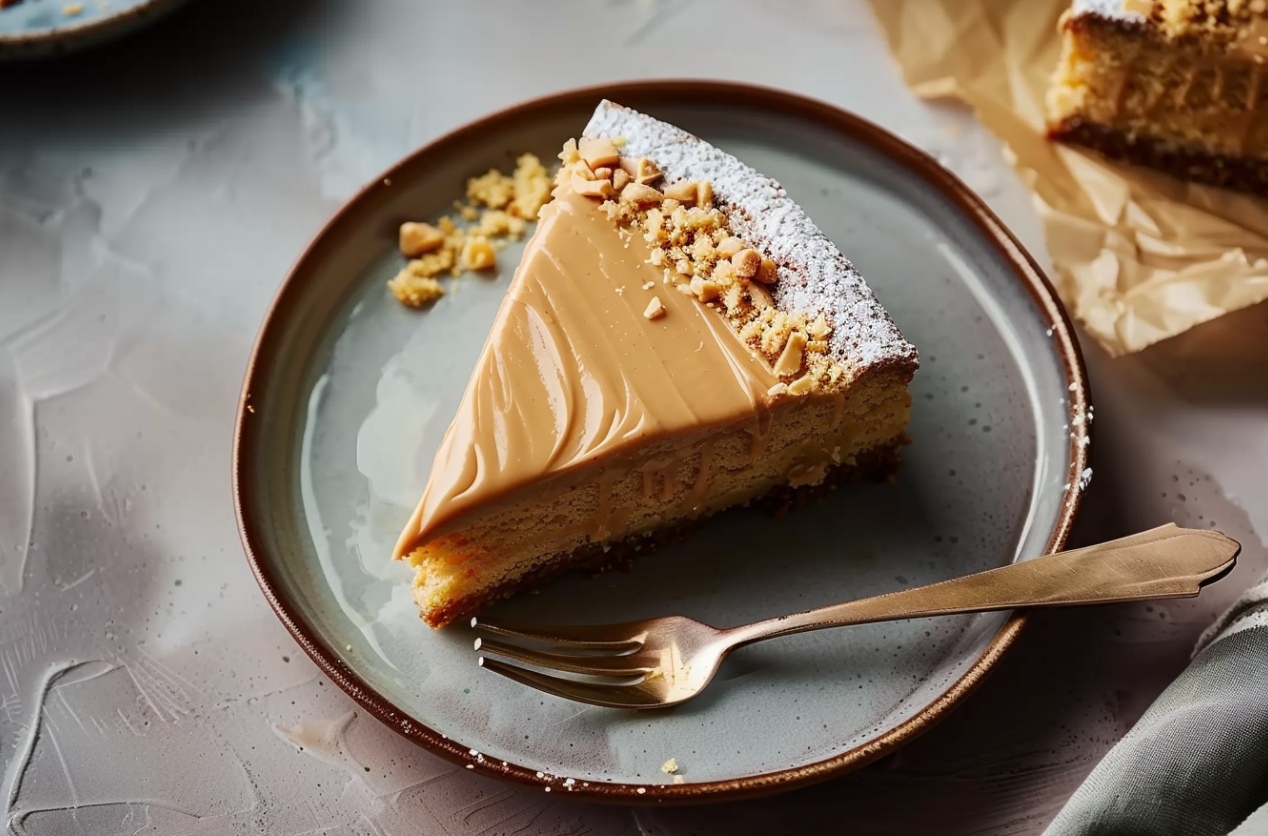Introduction to Peanut Butter Cake Recipe
Overview of the Peanut Butter Cake’s Popularity
Peanut butter cake recipe, with its rich, creamy texture and delightful flavor, stands as a beloved treat among dessert enthusiasts. This cake not only satisfies the sweet tooth but also offers a comforting, nostalgic taste that many cherish. The versatility of peanut butter cake allows it to be a hit at both casual gatherings and elegant celebrations.
The History of Peanut Butter Cakes
The inception of peanut butter cakes can be traced back to the early 20th century, gaining popularity as peanut butter became a household staple. Across the passing decades, this confection has undergone a metamorphosis, melding an array of ingredients and methodologies to elevate its taste and consistency. For more insights into its diverse preparations, visit Food Network’s Peanut Butter Cake Recipe.
What You Will Learn in This Article
This piece endeavors to furnish you with a comprehensive guide to crafting the epitome of peanut butter cakes, encompassing all essential knowledge for mastery. From basic recipes suitable for beginners to advanced tips that even seasoned bakers will appreciate, this guide covers it all. Alongside, you’ll find helpful advice on how to maintain the freshness of your cake and adapt it to meet different dietary needs. Here are the key areas we’ll explore:
- Basic peanut butter cake recipe
- Advanced baking techniques
- Tips for storing and maintaining your cake
- Dietary adaptations for specific needs
- Common questions and troubleshooting
By the end of this read, you’ll be ready to bake a moist and flavorful peanut butter cake that could become your new go-to recipe. For additional dessert ideas that might complement your newfound baking skills, check out our other articles on Epicurious Advanced Baking Techniques.
Basic Peanut Butter Cake Recipe
Print
The Perfect Peanut Butter Cake Recipe
- Total Time: 45 minutes
- Yield: 12 servings 1x
- Diet: Vegetarian
Description
A moist and rich peanut butter cake topped with creamy peanut butter icing, perfect for any celebration.
Ingredients
- Cake:
- 2 cups all-purpose flour
- 2 cups white sugar
- 1 teaspoon baking soda
- ½ cup milk
- 2 large eggs
- 1 teaspoon vanilla extract
- 1 cup water
- ½ cup butter
- ½ cup vegetable oil
- ½ cup peanut butter
- Icing:
- ½ cup butter
- ½ cup peanut butter
- ⅓ cup milk
- 1 teaspoon vanilla extract
- 4 ¾ cups confectioners’ sugar
Instructions
Cake:
- Preheat oven to 350°F (175°C). Grease and flour a 9×13-inch baking pan.
- In a large bowl, combine flour, sugar, and baking soda.
- In a saucepan, bring water, butter, vegetable oil, and peanut butter to a boil. Pour over the flour mixture and mix well.
- Add milk, eggs, and vanilla extract. Mix until smooth.
- Pour batter into the prepared pan and bake for 25-30 minutes, or until a toothpick inserted into the center comes out clean.
- Let the cake cool completely before icing.
Icing:
- In a medium saucepan, combine butter, peanut butter, and milk. Heat until the butter and peanut butter are melted and smooth.
- Remove from heat and stir in vanilla extract.
- Gradually add confectioners’ sugar, beating until smooth and creamy.
- Spread the icing over the cooled cake.
Notes
- Ensure the cake is completely cool before icing to prevent melting.
- Can be stored in an airtight container at room temperature for up to 3 days.
- Prep Time: 15 minutes
- Cook Time: 30 minutes
- Category: Dessert
- Method: Baking
- Cuisine: American
Nutrition
- Serving Size: 1 slice
- Calories: 500
- Sugar: 50g
- Sodium: 300mg
- Fat: 25g
- Saturated Fat: 10g
- Unsaturated Fat: 10g
- Trans Fat: 0g
- Carbohydrates: 65g
- Fiber: 2g
- Protein: 6g
- Cholesterol: 50mg
Keywords: Peanut Butter Cake
STEPS
Step 1
Gather all ingredients.
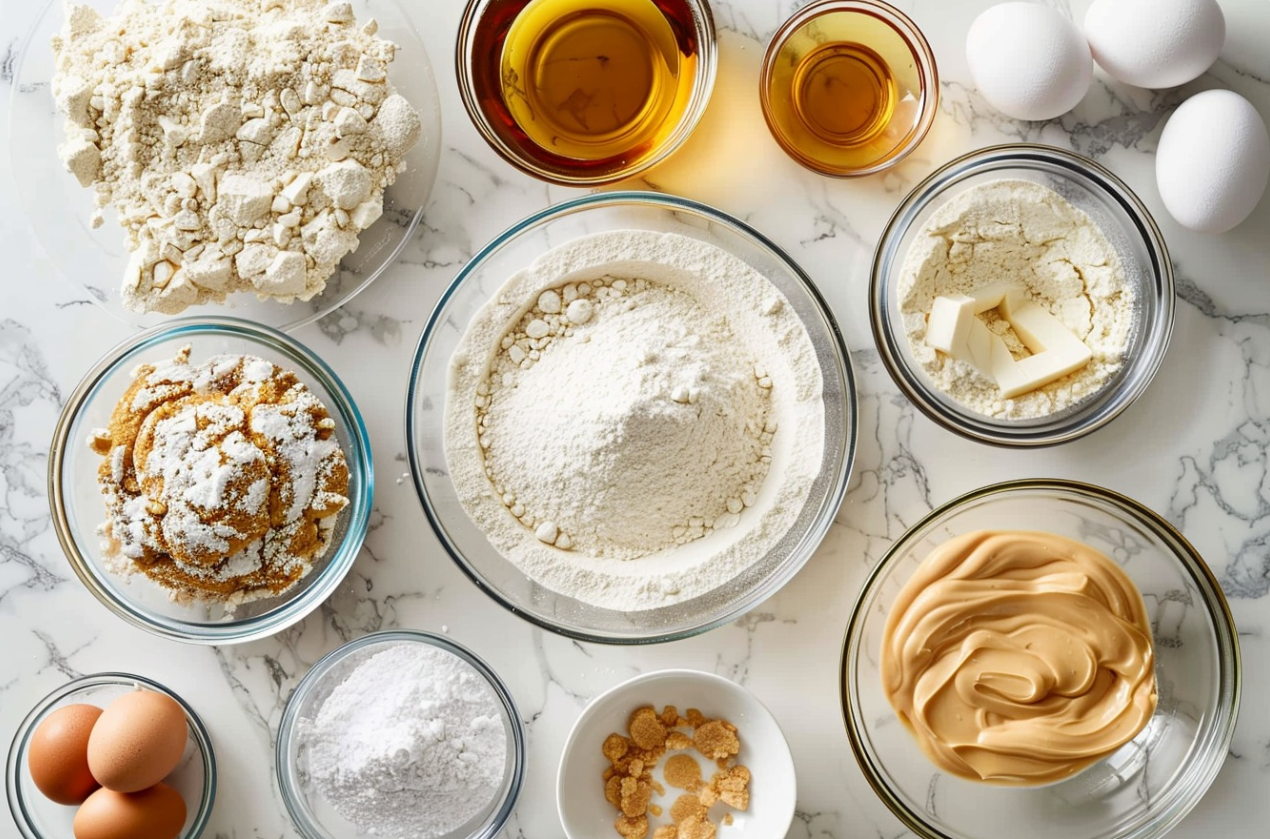
Step 2
Set the oven to 350 degrees F (175 degrees C) and let it preheat. Lightly grease a baking sheet with a rim.
Step 3
Prepare the cake: In a large bowl, blend the flour, sugar, and baking soda using a whisk.
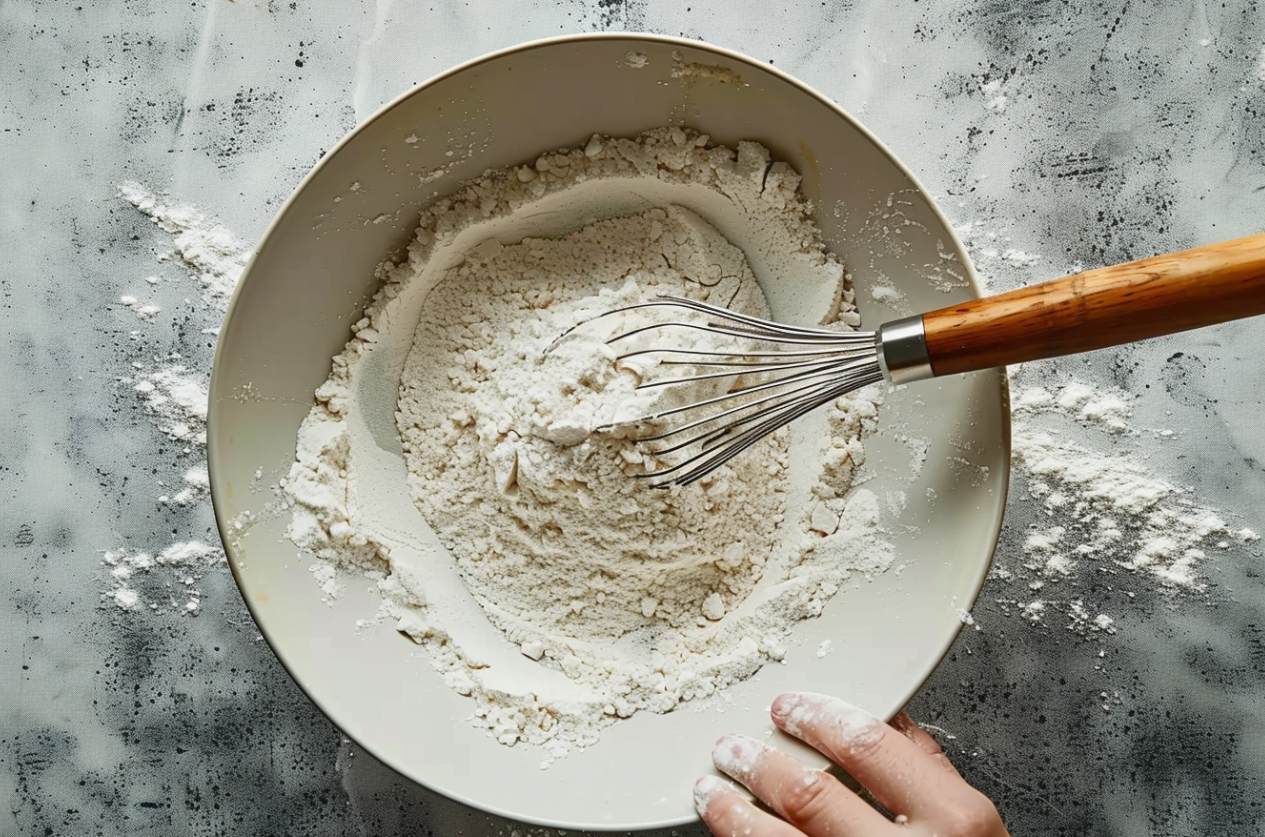
Step 4
Using an electric mixer on low speed, gradually incorporate the milk, eggs, and vanilla into the flour mixture until the batter is smooth.

Step 5
In a saucepan, combine water, butter, oil, and peanut butter; cook over medium heat, stirring continuously, until the mixture becomes smooth, approximately 5 minutes.
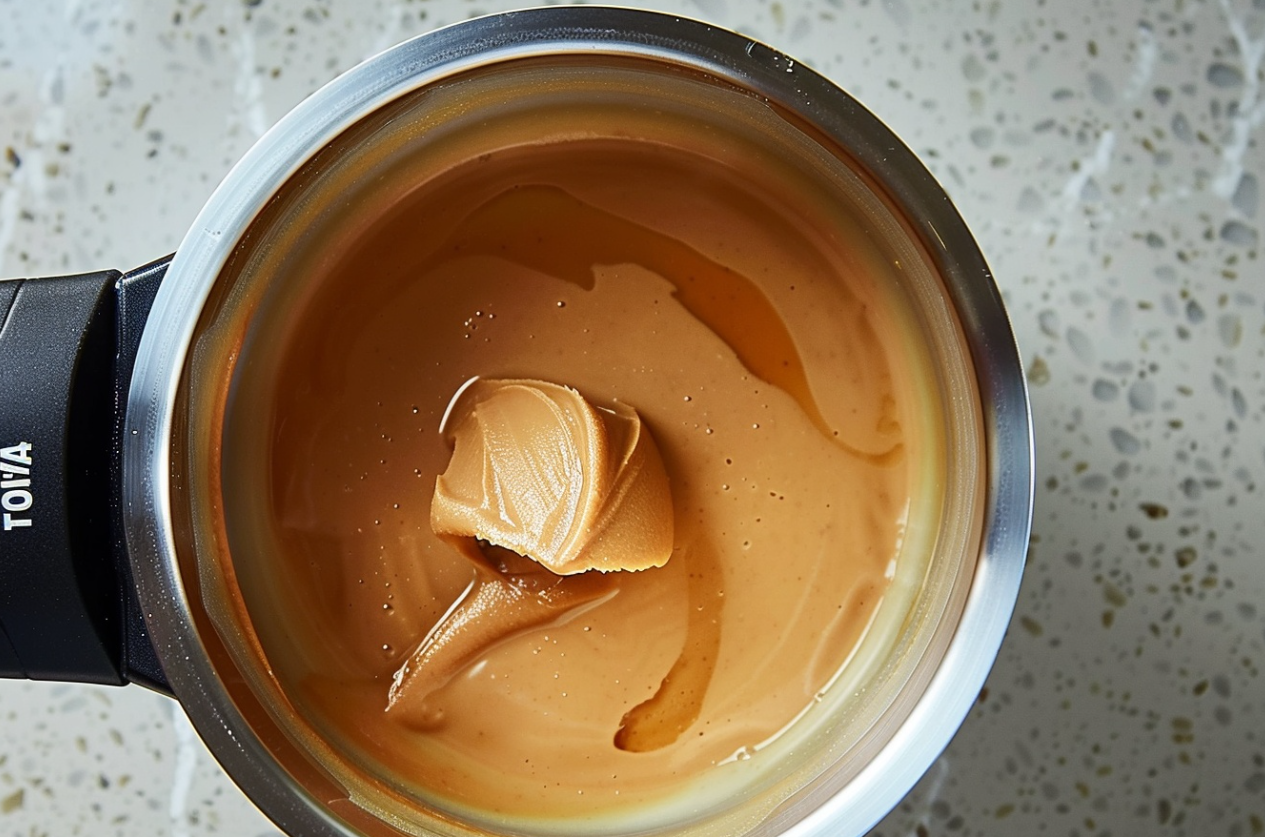
Step 6
Fold the peanut butter mixture into the flour mixture, stirring until the batter is thoroughly combined. Pour the batter onto the prepared baking sheet and spread it evenly.
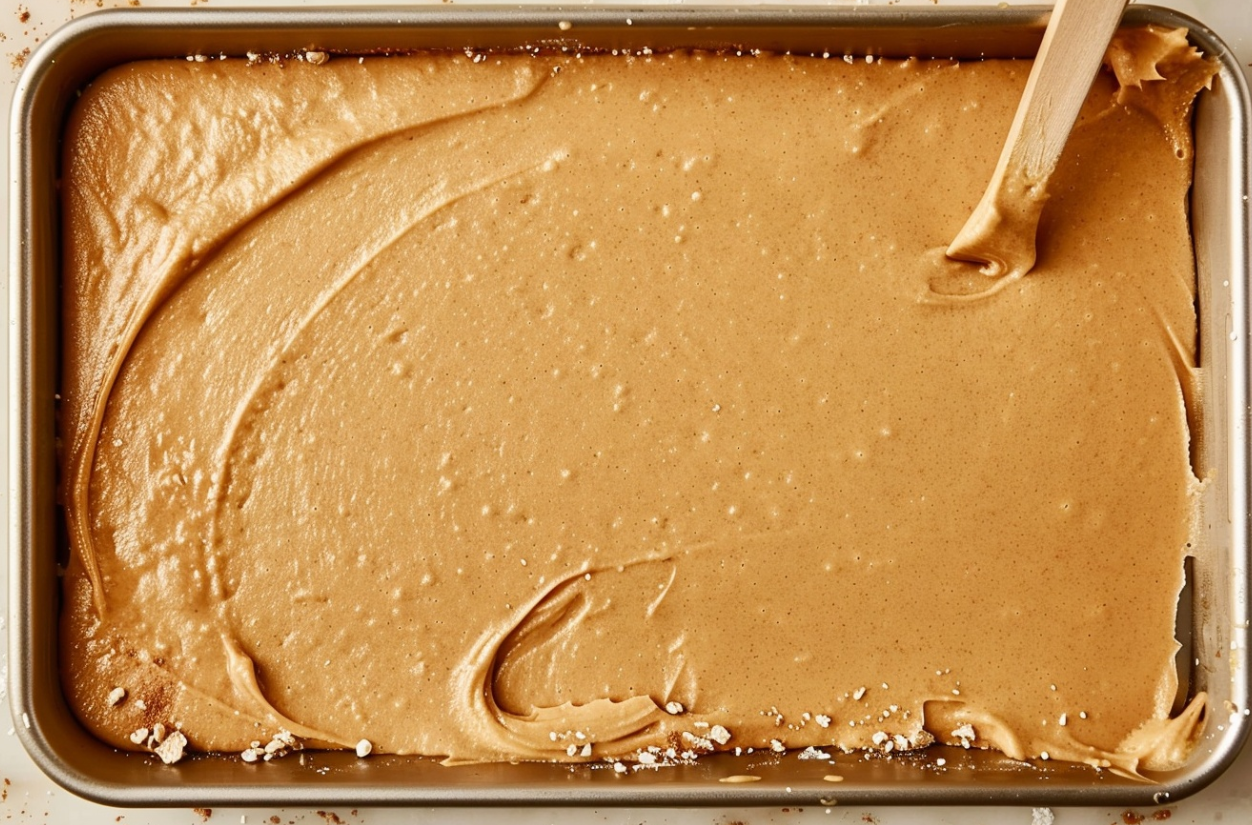
Step 7
Place in the preheated oven and bake for approximately 20 minutes, or until a toothpick inserted into the center of the cake emerges clean.
Step 8
Prepare the icing: In a saucepan over medium heat, melt the butter and peanut butter together, stirring until the mixture is smooth.
Step 9
Incorporate the milk and vanilla into the mixture, stirring until fully blended.
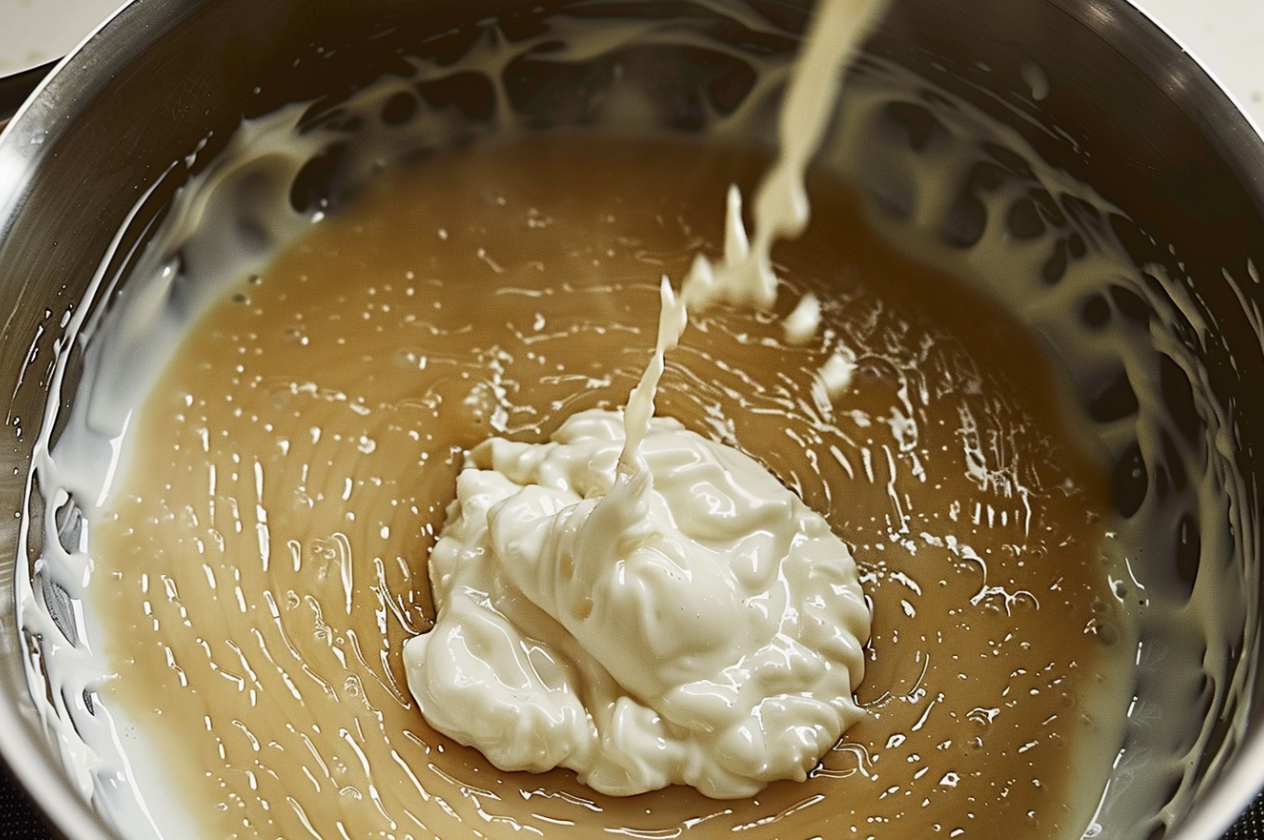
Step 10
Gradually whisk in the confectioners’ sugar, continuing to stir for 3 to 5 minutes until the icing is smooth.
Step 11
Drizzle the icing over the warm cake and spread it out evenly.

Step 12
Enjoy!
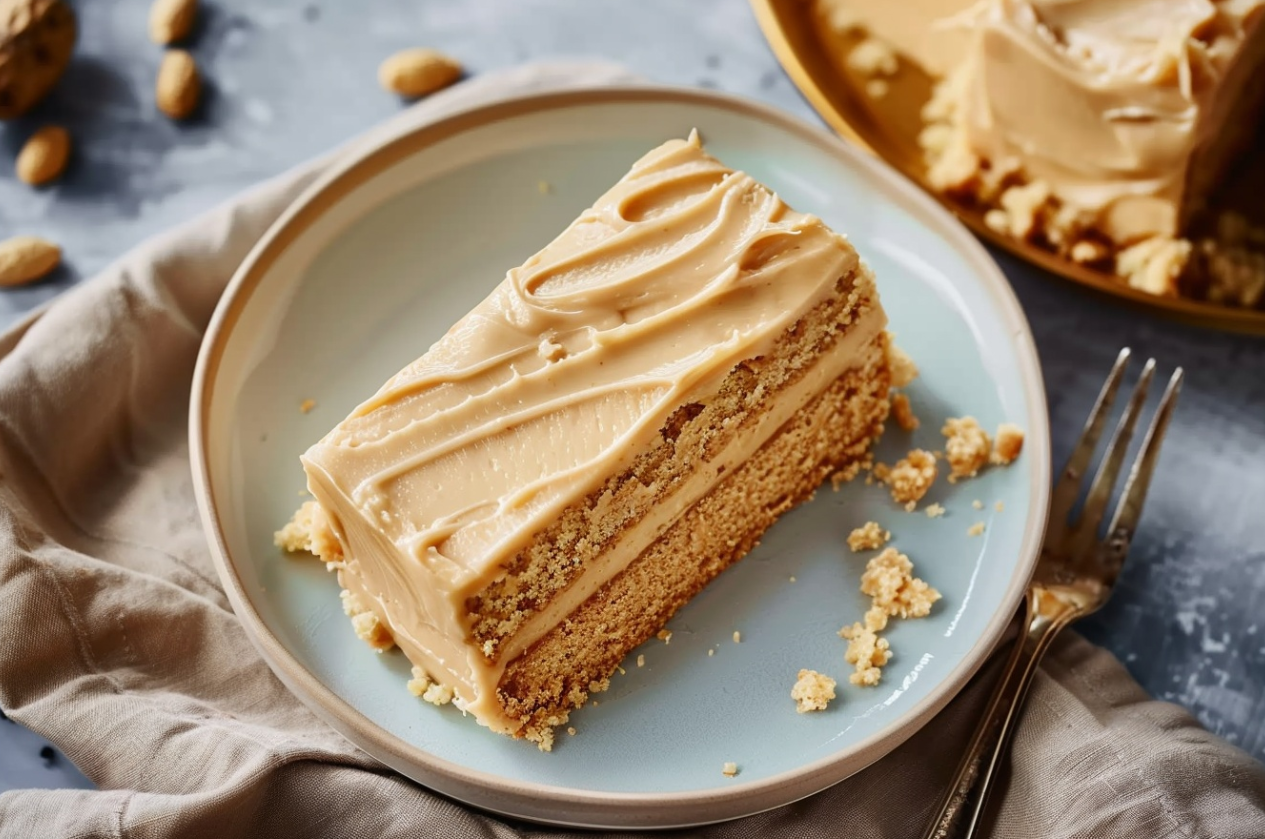
Advanced Techniques for Peanut Butter Cake Recipe
Decorating Tips
Elevating the appearance of your peanut butter cake recipe can turn a simple dessert into a stunning centerpiece. Here are some decorating ideas:
- Peanut Butter Swirls: Warm some peanut butter and use a spoon to drizzle it over the top of the frosted cake, creating artistic swirls.
- Chocolate Ganache: Pour smooth chocolate ganache over the cake for a luxurious finish. The chocolate pairs perfectly with the peanut butter flavor.
- Edible Decorations: Sprinkle crushed peanuts, chocolate chips, or even edible gold dust for an eye-catching look.
Texture Variations
To customize the texture of your peanut butter cake:
- For a Fluffy Cake: Use buttermilk instead of regular milk in your batter and beat the egg whites separately until stiff peaks form before folding them into the batter.
- For a Dense Cake: Increase the amount of peanut butter and reduce the baking powder by half to achieve a denser, richer texture.
Flavor Enhancements
Introducing additional flavors can complement the rich taste of peanut butter:
- Banana: Add mashed bananas to the batter to create a moist banana-peanut butter cake. This combination enhances the overall flavor profile and adds natural sweetness.
- Salted Caramel: Incorporate a salted caramel drizzle between layers or on top of the cake for a sweet and salty contrast that enhances the peanut butter.
These advanced techniques not only improve the aesthetics and texture of your peanut butter cake but also enhance its flavor, making each bite a delightful experience. By experimenting with these suggestions, you can tailor your cake to suit any occasion or preference, ensuring it’s always a hit with your guests. For more advanced recipes, visite cooking white.

Maintenance and Storage Tips for Peanut Butter Cake
Storage Guidelines
Proper storage is crucial to maintaining the freshness and flavor of your peanut butter cake. Here are the best practices:
- At ambient temperature, house the cake within an airtight vessel, ensuring freshness for a duration spanning three days. Safeguard it against direct sunlight and heat sources to forestall any frosting from melting.
- Refrigerator: For longer storage, refrigerate the cake, covered tightly, for up to one week. This is especially recommended if your cake has a cream or ganache topping.
Revival Tips
If your cake has gone slightly stale or dry:
- Moisten: Brush a light syrup over the cake layers before serving to add moisture. Simple syrup or flavored syrups can be used depending on the desired taste.
- Microwave: For a quick fix, microwave a slice for 10-15 seconds. This can help refresh the cake and bring back a bit of its original softness.
Freezing and Thawing
Opting for freezing is a commendable strategy for prolonging the lifespan of your peanut butter delicacy:
- Freezing: Envelop the cake snugly in plastic wrap, followed by a layer of foil to stave off freezer burn. Conduct freezing operations for a period extending to two lunar cycles. Mark the packaging with the date of freezing to maintain a clear record.
- Thawing: Facilitate the thawing process by placing the cake in the refrigerator overnight. Upon completion of thawing, allow the cake to acclimate to room temperature before serving, ensuring optimal flavor and texture.
These tips for storing, reviving, and freezing your peanut butter cake will help you enjoy your dessert for days (or even weeks) after baking. By following these guidelines, you can ensure that every slice is as delicious as when it was first baked.
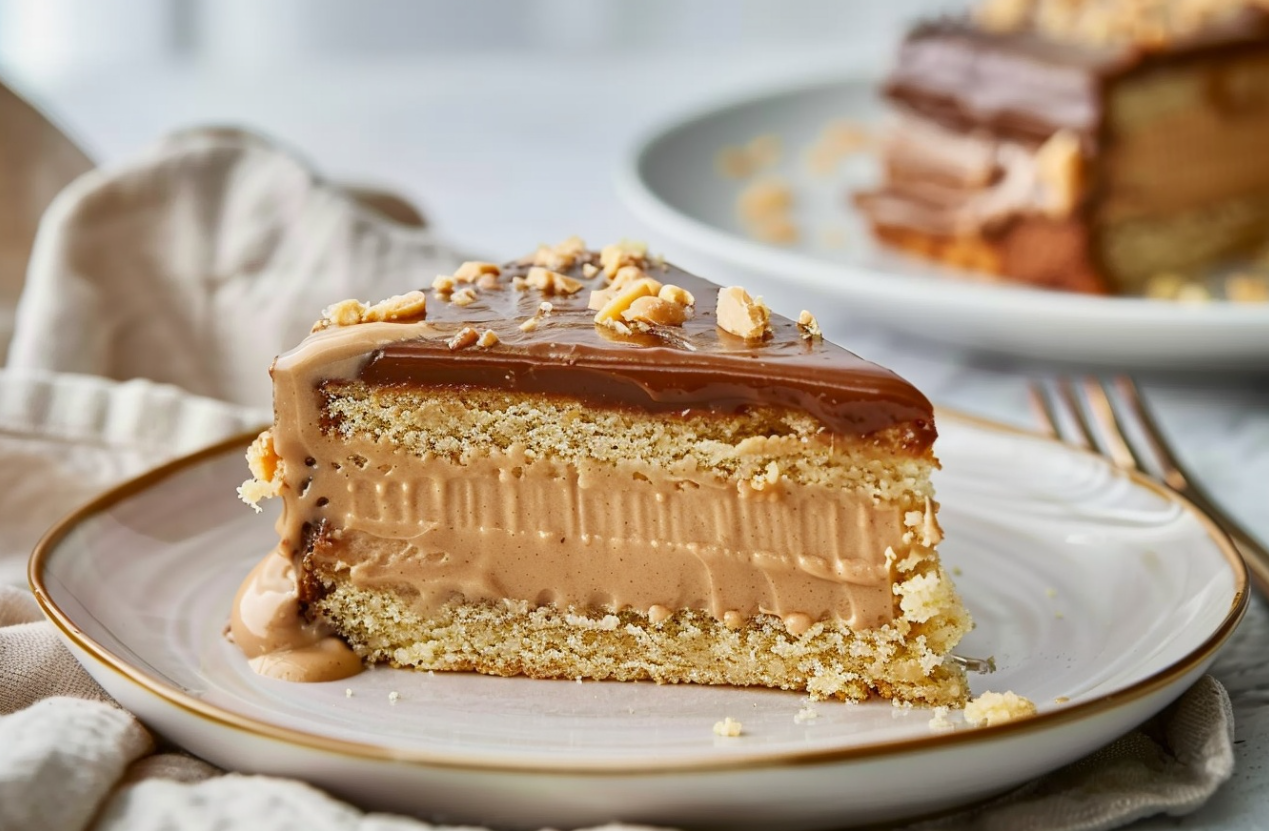
Dietary Adaptations for Peanut Butter Cake Recipe
Gluten-Free Version
Creating a gluten-free peanut butter cake recipe is straightforward and doesn’t require sacrificing texture or flavor:
- Flour Alternatives: Replace all-purpose flour with a gluten-free flour blend that includes xanthan gum, which helps mimic the texture of gluten.
- Check Labels: Ensure that all other ingredients, including baking powder and peanut butter, are certified gluten-free to avoid cross-contamination.
Vegan Alternatives
Transforming your peanut butter cake into a vegan delight is simpler than one might anticipate:
- Egg Substitutes: Utilize flax eggs as substitutes, crafted by blending ground flaxseed with water. This mixture also adds a slight nuttiness that complements the peanut butter.
- Dairy-Free Milk: Replace traditional cow’s milk with almond, soy, or oat milk, all of which serve as excellent dairy-free alternatives for baking.
- Vegan Butter: Use vegan butter for greasing the pan or as part of the cake mix to keep the rich, moist texture.
Reduced Sugar Options
Reducing sugar in your peanut butter cake recipe doesn’t mean reducing sweetness or pleasure:
- Sweetener Substitutes: Use coconut sugar or a stevia-based blend designed for baking. These alternatives lend a subtle sweetness without the spike in blood sugar.
- Adjust Quantities: Experiment with reducing the sugar content incrementally. Often, you can reduce the sugar by up to 25% without dramatically affecting the overall taste.
These modifications enable you to accommodate a myriad of dietary requirements and tastes, guaranteeing that every individual can savor a delectable slice of peanut butter cake. By employing these substitutions, your cake will not only be inclusive but also retain all the beloved qualities of the traditional recipe. Healthline Dietary Substitutions

Frequently Asked Questions (FAQs) About Peanut Butter Cake Recipe
Common Issues
Even experienced bakers face challenges when making a peanut butter cake. Here are solutions to some typical problems:
- Cake is too dry: Ensure not to overbake and measure ingredients accurately. Adding a bit more milk can also help.
- Cake didn’t rise: Check that your baking powder is fresh and properly activated. Verify that the oven attains the appropriate temperature prior to commencing the baking process.
Ingredient Substitutions
Sometimes, you might find yourself short of a certain ingredient. Here are some quick swaps:
- No peanut butter? Opt for almond butter or cashew butter to achieve a texture akin and flavor nutty in essence.
- Low on eggs? As mentioned in dietary adaptations, flax eggs are a great vegan alternative that won’t compromise the cake’s structure.
Serving Suggestions
To enhance your peanut butter cake experience, consider these serving tips:
- Add a topping: Serve with whipped cream, a scoop of vanilla ice cream, or a drizzle of chocolate syrup to complement the rich peanut butter flavor.
- Present warm: Briefly heat slices in the microwave to rejuvenate the cake’s moistness before serving.
By attending to these commonly asked questions, you’ll bolster your ability to navigate any challenges encountered during the preparation of your peanut butter cake, guaranteeing a consistently delightful result on every occasion. These tips are designed to enhance your baking experience and help you serve up a cake that’s as delicious as it is impressive.
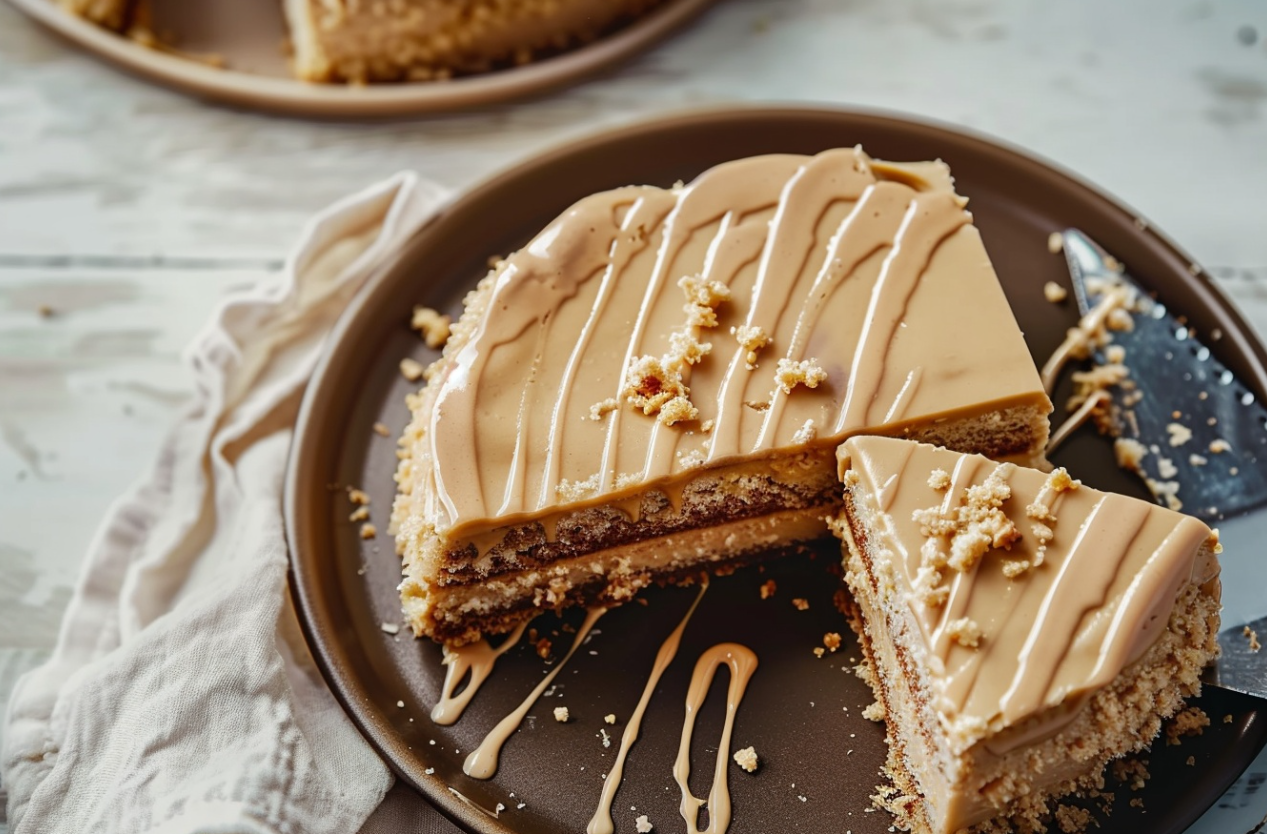
Conclusion: Crafting the Ultimate Peanut Butter Cake
Sealing the Deal on Baking Mastery
You now have the blueprint to create an exquisite peanut butter cake, enhanced by a spectrum of tips and tricks covered in this guide. Starting from the basic recipe to intricate customization options, every piece of advice is designed to elevate your baking experience. The journey through various techniques has prepared you to not only make a great cake but to also infuse it with your unique spin.
Embracing Flexibility in Baking
This guide has underscored the importance of adapting your cake to various dietary needs, ensuring that everyone can enjoy a slice regardless of their diet preferences. Whether it’s making a gluten-free, vegan, or low-sugar version, the peanut butter cake remains versatile and welcoming to all.
Anticipating and Solving Baking Challenges
The FAQs section armed you with solutions to common pitfalls, ensuring your baking process is as seamless as possible. Keep in mind, every obstacle faced presents a chance for growth and further refinement of your abilities.
As you step back and admire your work, from the fluffy texture to the impeccable flavor, let this guide be a testament to your dedication and creativity in the kitchen. Every peanut butter cake you bake is not just a dessert—it’s a celebration of passion and perseverance. Savor the fruits of your labor and continue to bake with a fervent passion and affection.

